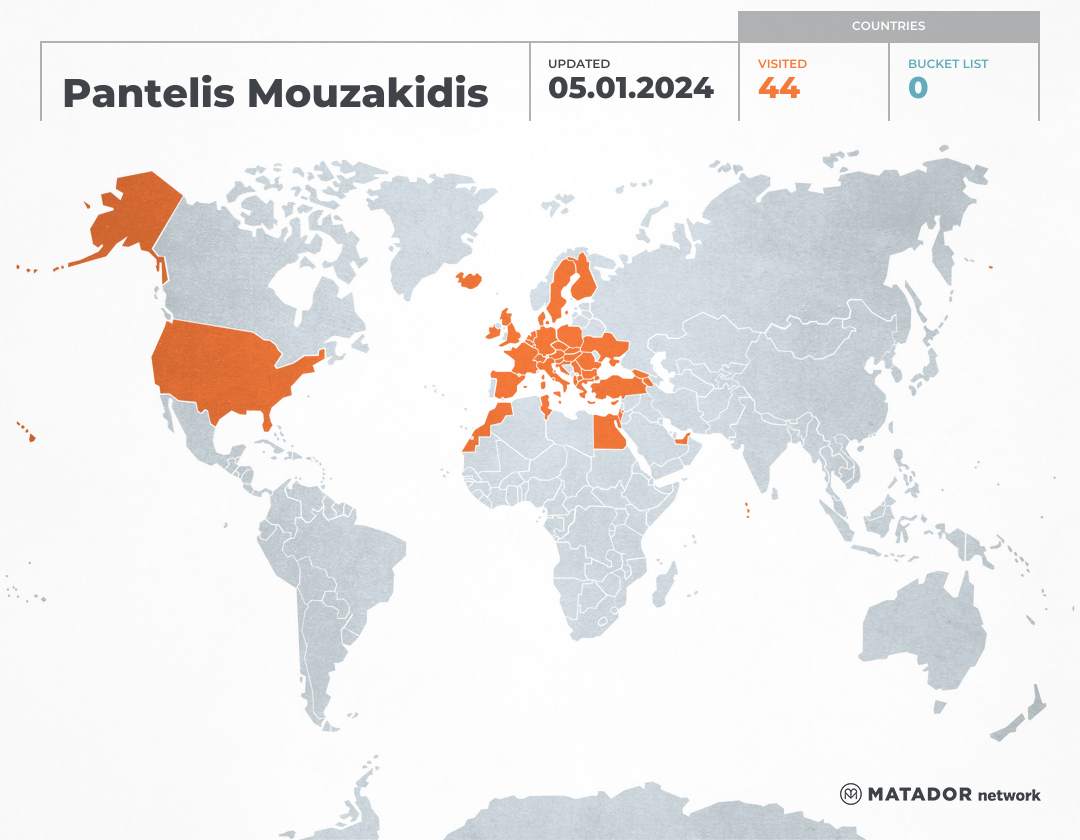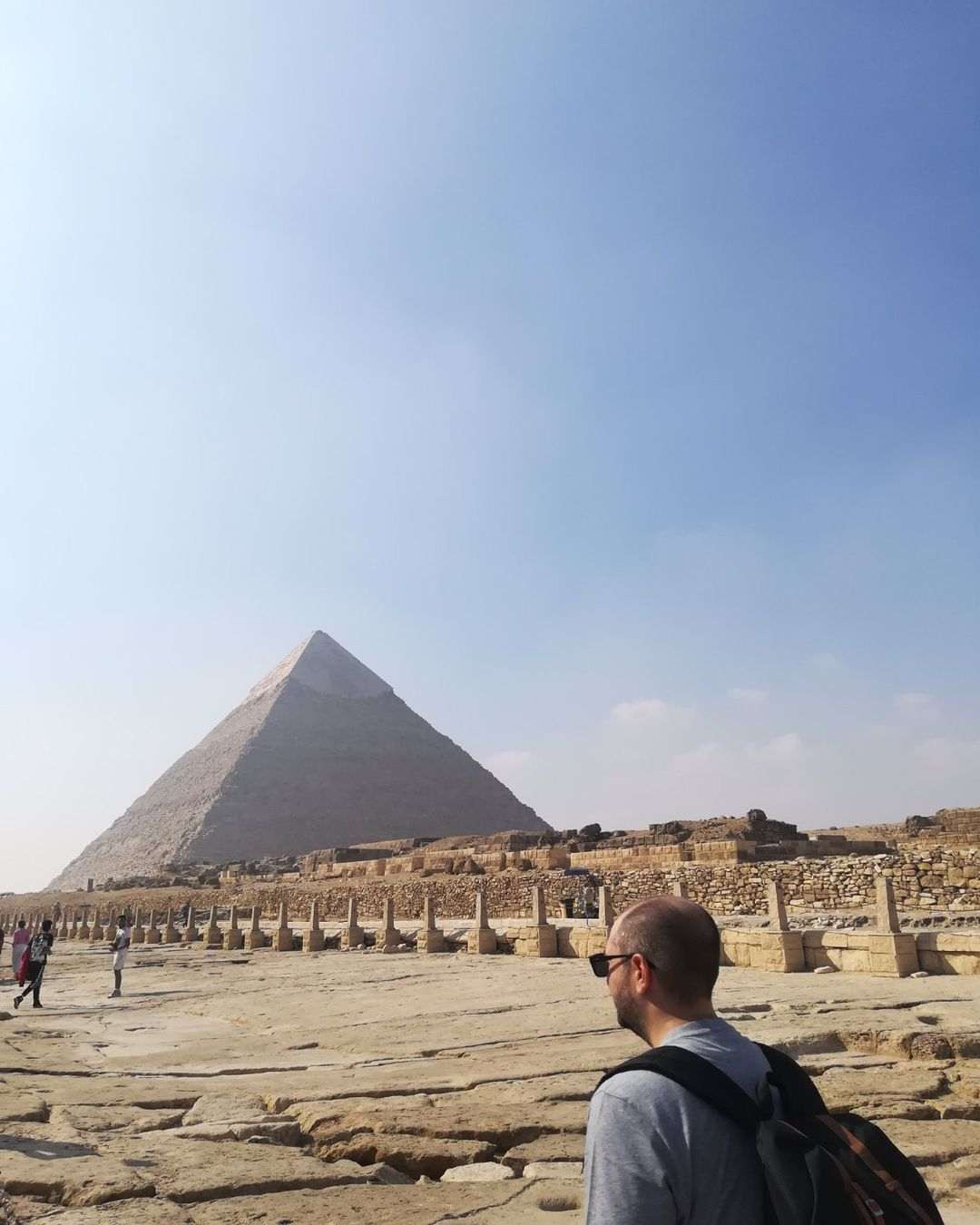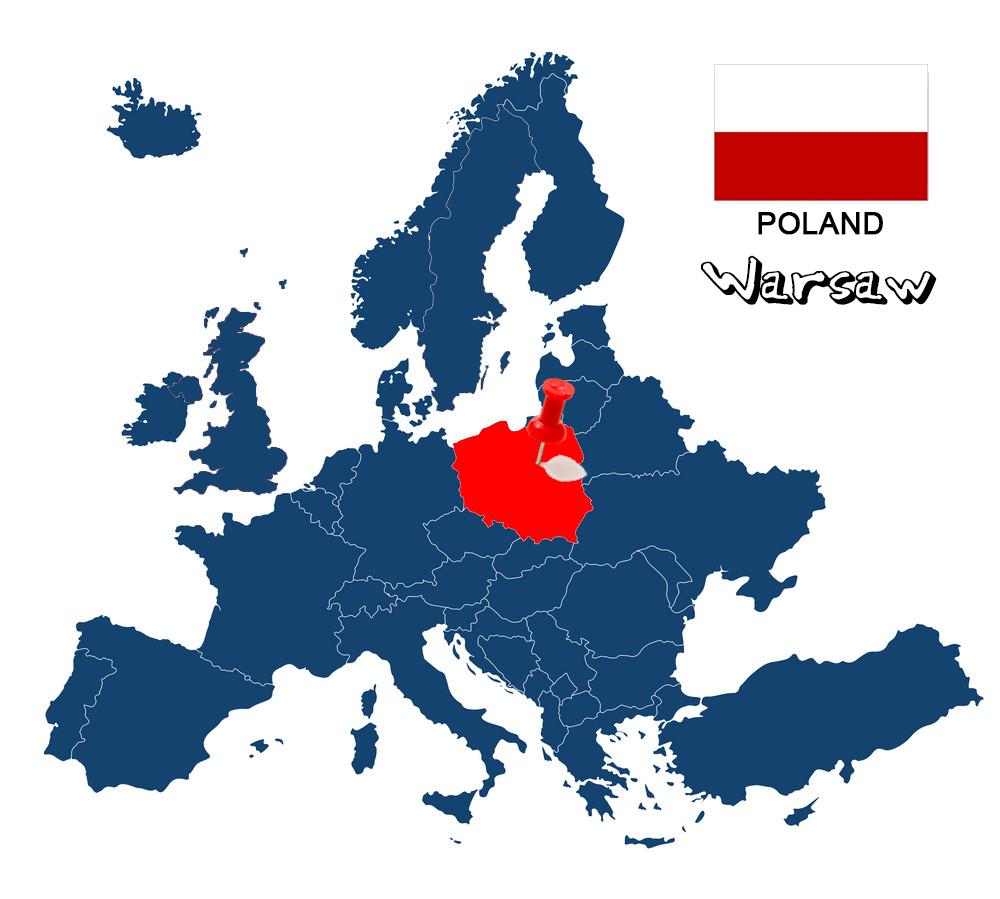
For me Warsaw will always be one of the most beautiful trips I have ever made and that is not going to change. Without being necessarily the most glorious place, I have visited, it managed to impress me as few cities in the world. When you visit Paris, London or Rome you know more or less what you will encounter, your expectations are very high and usually confirmed. But when you choose a city like Warsaw, which is not so advertised, your requirements are lower and you typically enter compared to the above. So what I have to say about the Polish capital is that it has nothing to envy from the top travel destinations and that it requires more attention than it has been given to date.
A few words about the city
Warsaw is the largest city and capital of Poland since 1596 and is the most significant political and economic center of the country. The urban population reaches 1,758,143 residents, while in the wider metropolitan area 3.101,000 inhabitants. During the Second World War, it was completely ruined by the Nazis, but since then it was reborn from the Ashes, thus receiving, not unfairly, the nickname "City of the Phoenix", the mythological creature that had the ability to regenerate. Perhaps what comes to mind when you hear Poland, is a poor Eastern country with a former communist regime and colorless-decadent cities. Surely a visit to Warsaw will make you reconsider, as this is a town full of skyscrapers, a picturesque "Old Town", palaces, parks full of greenery and a lively nightlife. So I will try to introduce you to the "City of the Phoenix" through my own eyes and share with you what I believe should be seen by someone who visits it for the first time.
Stare Miasto
The Old Town (Stare Miasto) is the most beautiful district of Warsaw, but it is not as old as its name betrays. It is located between the banks of the Vistula River and the Royal Castle of Poland. Its history is turbulent, since, as I mentioned in the introduction, it was practically flattened by the Nazi bombings during the Second World War. Fortunately, for us, however, it was completely reconstructed in the following years and is now on UNESCO's list of World Heritage sites, as an "important example of an almost entire reconstruction".
The heart of the area is the Old Market Square (Rynek Starego), where the Royal Castle (Zamek Krolewski w Warszawie) dominates. The royal castle of Warsaw was the official residence of the Polish monarchs and is located at the entrance to the Old City. In its extensive history, the fortress was destroyed and looted many times by the Swedes, the Brandenburgs, the Germans and the Russians, while after its destruction by the Nazis it was rebuilt almost from scratch. Today it is a historical and National Monument, and more than 500,000 people visit the castle every year. Although externally it may appear as a simple, beautiful and red palace, the interior is particularly impressive, full of attractive collections and "blue blood" objects. It is worth climbing to the top, so you can admire the excellent views of the city. The entrance costs 30zl, that is about 7e.
In the center of the square is moreover the column of Zygmund (Kolumna Zygmunta), constructed in 1644 and is one of the oldest secular monuments of Northern Europe. It depicts King Zygmunt III Waza, who in 1596 transferred the Polish capital from Krakow to Warsaw. It has a height of 22 meters and is adorned by four eagles. The king at the top of the column is dressed in armor and carries a cross in one hand and a sword in the other.
Of course, the old town could not miss the dozens of restaurants, cafes and other shops, the colorful medieval houses, which exist in almost every northern European metropolis, making this part of Warsaw even more beautiful. Architecturally, however, the Cathedral of the city stands out, which is dedicated to St. John (Bazylika archikatedralna sw. Jana). It is a "special" building, which like most of the city, was completely destroyed but rebuilt thanks to the donations of the inhabitants of Poland.
Finally, a few streets further you will see the Warsaw mermaid (Syrenka Warszawska), which is the symbol of the town and sister of the Copenhagen mermaid of the same name. A charming and pleasant way to move between the alleys of the old town is also the traditional carriages (droshky), which cost a minimum zloty.
Trakt Krolewski
The Royal Street (Trakt Krolewski) is the most famous and busiest street in the city, starting from the old town and ending in the southern suburbs and the Wilanow area with the palace of the same name. This is a delightful journey of about half an hour, which will fill you with beautiful pictures and bring you in front of dozens of great monuments and buildings of Warsaw. The Church of Saint Anna (Kosciol Akademicki sw. Anny), the Carmelite temple (Kosciol Wniebowziecia NMP I Swietego Jozefa), the Presidential Palace, the Church of the cross (Kosciol Swietego Krzyza), the Kazimierz Palace, the historic Bristol Hotel, the National Library, the impressive University of the city and of course, on the wayside, the Warsaw Castle. In the latter part of it, which is also pedestrianised, you will find high tech benches playing Chopin, outdoor art exhibitions, street artists and cafes overlooking the banks of the Vistula.
Lazienki Park
A few minutes from the center of Warsaw, between Old Town and Wilanow, you will come across the park of the Royal Baths (Lazienki Park). It is an oasis of green, spread over 760 acres and designed in the 17th century! There you will have the opportunity to admire scattered themed gardens, monuments dedicated to gods and artists (Chopin's the Chopin monument stands out around which events are organized), fountains, lakes, palaces, museums and of course animals, such as ducks, squirrels and peacocks, to stroll among you. This beautiful park is ideal for relaxing and unwinding between tours, walking in idyllic natural surroundings or even better, if the weather allows, cycling. A walk here is ideally combined with a visit to Wilanow Palace, which I will mention directly below.
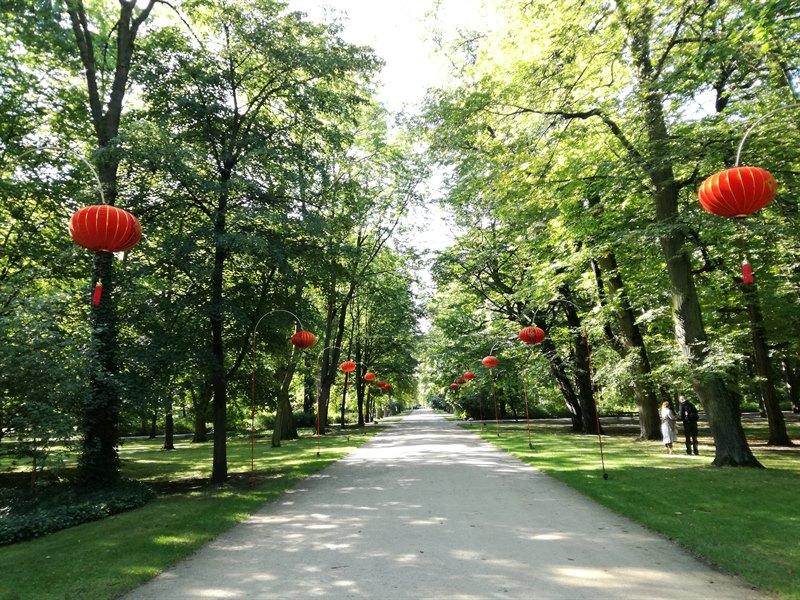
Palacu Wilanow
Wilanow Palace (Palacu Wilanow) is one of the most important monuments of Poland, having survived the country's "divisions", the two World Wars, bombings and other looting, standing proudly to remind the culture of the Polish state, before the misfortunes of the 18th century. It was constructed for King John III Sobieski in the last quarter of the 17th century (1696) and later enlarged by other owners. Its architecture is original, a fusion of general European art with distinct Polish building traditions. The Palace Museum, founded in 1805, is a repository of the country's royal and artistic heritage and has hundreds of exhibits that will amaze you. The entrance costs 20zl, that is, about 5e.
Palac Kultury i Nauki
The Palace of Culture and Science (Palac Kultury i Nauki) is the tallest building in Poland and one of the tallest in Europe. The locals do not particularly appreciate it, as it is a "gift" of Stalin to the city as a sign of friendship of the Soviet Union to the country, built in the 1950s. Nevertheless, this building is particularly impressive, as it has 42 floors and a height of 230 meters, which makes it visible from any part of the town and is a compass to easily orient you in Warsaw. With 20zl you will be able to go up to the 31st floor of the Palace and admire the incredible panoramic view of the whole city, while on the ground floor there is an exhibition of iron effigies, which is extremely interesting. At the end of the room, for fans of the TV series Game of Thrones, there is also the iron throne to be photographed and feel, even for a while, a king or queen.
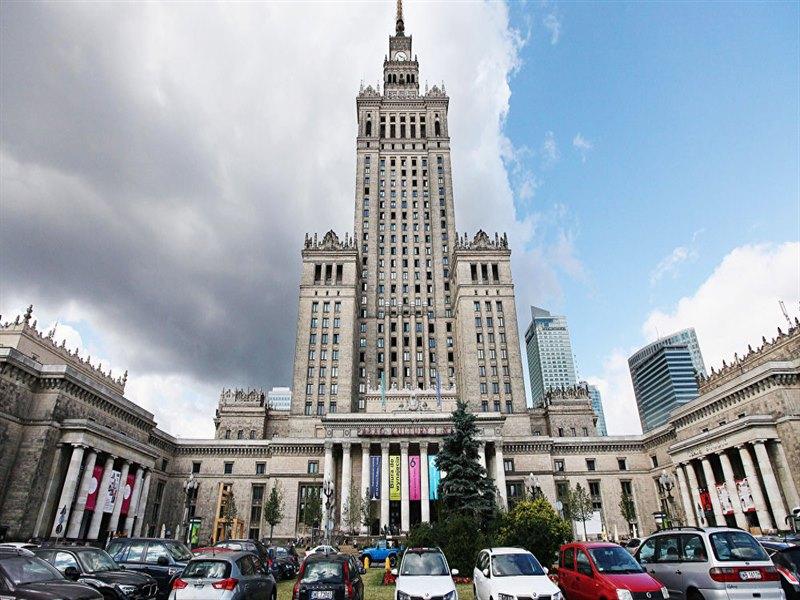
The museums
The Warsaw Rising Museum (Muzeum Powstania Warszawskiego) is the most interesting museum in the city, which presents in an interactive way the turbulent history of Warsaw during the World War II. It is dedicated to the Warsaw revolution against the Nazis in 1944, with hundreds of exhibits and tributes, testimonies, documents and virtual presentations. The truth is that it is not located in the center of the city, and you will need a trolley to reach it. But the fact that it is crowded daily, I think makes it worth visiting for those who want to make a trip to the history of the country. The entrance costs 25zl, that is, about 6e.
Another particularly interesting museum is the one that tells the story of Polish Jews (POLIN Muzeum Historii Zydow Polskich). It is housed in a beautiful building in an area that was formerly considered a ghetto, while outside there is the monument dedicated to Polish Jews. Inside you'll find a multimedia exhibition regarding the adventures of the city's Jewish community, which flourished until the Holocaust. The entrance costs 25zl, that is, about 6e.
The National Museum of Poland (Muzeum Narodowe w Warszawie) is the largest in the city and one of the largest in the country. It features collections of Egyptian, Greek and Roman art, exhibits of paintings from all over Europe, but also China and part of Hitler's private collection of paintings. The entrance costs 20zl, that is, about 5e.
Ultimately, another museum that you should not miss is the Science Center of Copernicus (Centrum Nauki Kopernik). It is considered a place suitable for all ages, which presents exhibits in the form of an experiment, test or puzzle and puts your mind to think and reflect. It is essentially a museum of physics, which functions as a school for Physics subjects for children and is very educational even for the older ages, which we think nothing can surprise us anymore! You will need at least two hours and maybe more to turn around and deal with all the exhibits, so it would be wise to leave your things in the lockers at the entrance, to have more ease of movement and comfort. This center is located on the banks of the Vistula River and can be combined comfortably, with a walk on the east side of the city. The entrance costs 31zl, that is, about 7e.
Praga
Crossing the Vistula River, you will find yourself in Praga. You will not have moved to the Czech Republic, since Warsaw has also Praga and is just as beautiful. This is an area that used to be a ghetto, with neglected buildings, a Soviet atmosphere and dark corners characterizing the quarter, thus making it a marginalized neighborhood. In recent years, however, the scene has changed, as many artists and bohemians have moved there, setting up art spaces in old buildings, opening galleries and bars in abandoned warehouses and turning them into clubs, restaurants, bazaars or all of the above, former jam factories and crafts bottles. Where Praga meets the river, you will also find the city's Zoo (Miejski Ogrod Zoologiczny w Warszawie), as well as the riverbanks along the tram lines, where you will see locals lounging every afternoon.
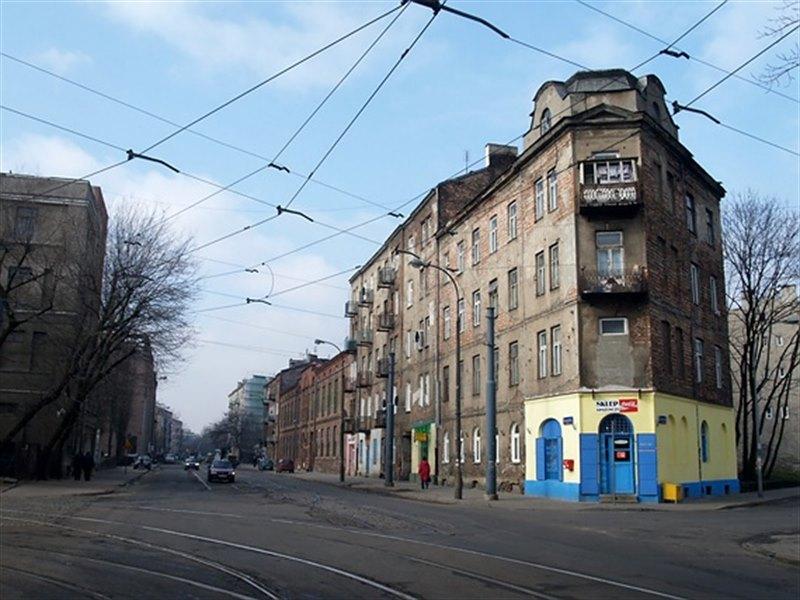
Nowe Miasto
The narrow streets of the Old Town will lead you to the gates of Barbican, the Fortress of the walls that separate it from the New Town (Nowe Miasto). But don't be fooled by the name, as it is just as picturesque and just as old as the Old Town. Built in the 15th century as an independent state, this district features a beautiful, quiet square with trees, restaurants with swings instead of tables and the pale white temple of St Kazimierz (Kosciol Sakramentek pw. sw. Kazimierza) with the turquoise dome dominating its edge. As was the case with its "neighbor", the New Town was razed by the Germans and rebuilt from scratch in the 1950s.
Srodmiescie
This is the real new city. The most fashionable and bustling part of Warsaw, around Centrum metro station. Here the huge boulevards are flanked by equally enormous sidewalks, but also skyscrapers in a density that only in German metropolises or in London can be found on European lands. In the heart of Srodmiescie dominates the Palace of Arts and Sciences, around it spread the markets and fashionable department stores of the city, while the most interesting part is hidden in the arcades behind the voulevarta, where there are outdoor bars, pubs, hostels and cute little shops with excellent street food.
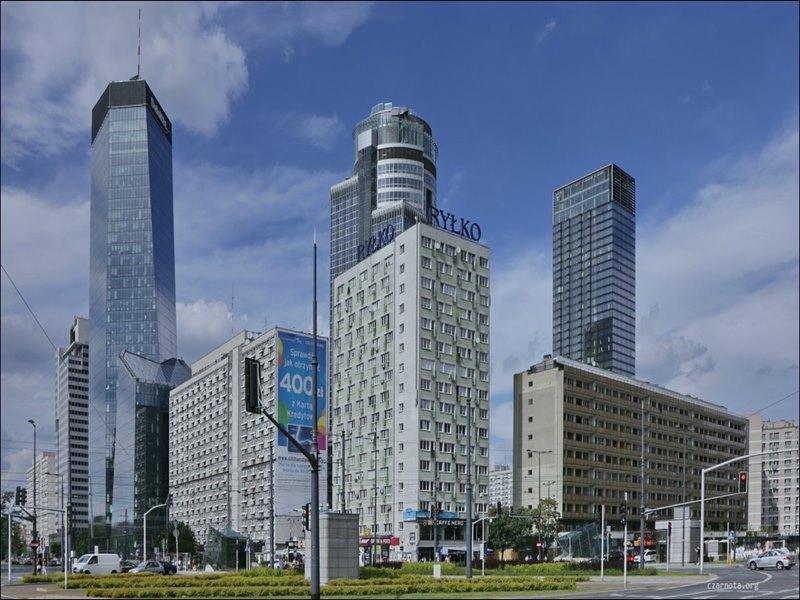
How to go
Warsaw has two airports, Chopin for the big airlines and Modlin for the low-cost companies. Thessaloniki is connected by air to Warsaw and Modlin Airport via Ryanair. With proper planning one can find tickets starting from 60€ round trip. Beyond that if you want a more comfortable flight you can choose a flight with Aegean and Chopin Airport, from 121€ round trip.
Where to stay
The city is not very large or highly touristic, which means that you will not have any difficulty finding accommodation to stay. Certainly as a first choice I recommend the center and the old town, but there prices are more pinched. If you want something more economical try the Wola area, which is just outside the center, close to the Polish Uprising Museum. There are housed the largest skyscrapers of the city, such as those of Samsung, ZTE and Warda. So my choice is Premiere Classe Varsovie / Warszawa, a two star hotel that combines high quality with low price.
How to move
In Warsaw the way of transportation is especially easy, since the city has an excellent public transport with itineraries all over the town. The metro (not exactly metro, I would describe it more as a train), is a good solution if you want to go a little further out of the center, but you should be careful how you get tickets, as there are dissimilar machines for the two different lines. When you use it, do not miss the stop Plac Wilsona, considered one of the most beautiful in Europe. The trolley bus I think is the handiest and most economical means of Warsaw and the one you should and will use the most, as there are lines everywhere and routes are very frequent. A very good way to travel is even the buses, which are brand new, while I was particularly impressed by the fact that you can get a ticket from the machine inside, even with a card! Finally, taxis are cheap with an average rate of 50 cents, but they operate mainly with phones calling.
What to eat
In Polish cuisine, which is influenced by the cuisines of Central Europe, you will find many meat and soups. To be honest I cannot say I found something traditional Polish, which drove me crazy, since most restaurants now move to more Europeanized menus. The most beautiful Polish one I visited was Restaurant Kultura in Kino, on the royal street. If you have someone who speaks Polish with you, it would be good to visit a bar mleczny, which is something like the traditional canteens of the country. Unfortunately, for tourists, everything is written in Polish, as it is addressed only to locals and it is difficult to understand what is what, if you do not know the local language. One dish you should try is, of course, the well-known borsch soup. However, if you want to get away from the heavy Polish cuisine and looking for something Italian, I suggest you visit the restaurant Giovanni Rubino, which has nothing to envy from the "original" Italian trattorias. Finally, if you are a fan of burgers, make a stop at STIXX Bar & Grill, where you will try the most delicious burgers of your life with homemade ketchup!
Useful information

In Warsaw we travel with a passport or a new type of Police ID, where the details are written in Latin characters.
In Warsaw the language used is, of course, Polish. But most, if not all, speak English, so ask for clarification in English.
The currency of the country is the Zloty (Polish zloty) and its exchange rate at the moment is 1 € = 4.33 zloty. Transfer your money either to the dozens of banks in the city or to the exchange offices, which list the exchange rates, since they receive a very small commission.
Getting to and from the airport is simple, as there are regular bus services and trains that take you to the city center.
The Greek Embassy in Warsaw is located at 35 Ul.Gornoslaska Street, 00-432 and its telephone number is +4822 6229460 - 1.
In winter the temperatures are extremely low, it makes sense if one considers its geographical location, so the ideal time to visit it is spring or summer.
Recommended excursions → Krakow, Wroclaw, Katowice, Auschwitz

If this article seemed interesting or contributed to your quality information, then you can like my facebook page: o_thessalonikios or follow me on instagram!
Mouzakidis Pantelis






